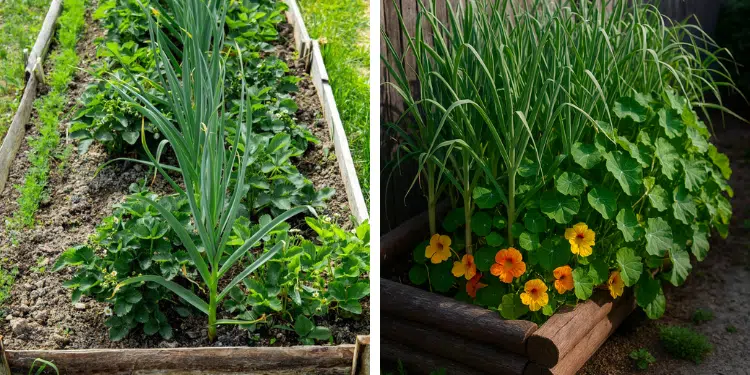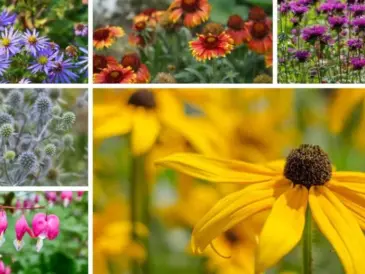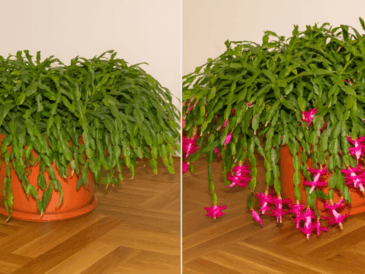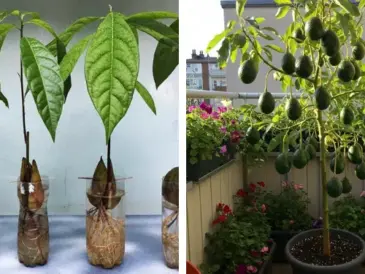Garlic is more than just a kitchen staple – it’s also one of the most valuable plants you can grow in your garden.
Beyond its rich flavor and health benefits, garlic acts as a natural pest deterrent, protecting nearby crops from insects and fungal diseases.
But not every plant loves growing next to garlic. Some thrive beside it, while others can struggle due to its potent chemical compounds.
Knowing the best companion plants for garlic – and the ones to avoid – can help you create a healthier, more productive garden.
Why Practice Companion Planting with Garlic?
Companion planting is the art of pairing plants that support each other’s growth, deter pests, and improve soil health.
Garlic, with its strong scent and sulfur-based compounds, is one of the most effective natural companions in any vegetable or flower garden.
Here’s what makes garlic a garden superstar:
- Natural pest repellent: Its smell deters aphids, spider mites, Japanese beetles, and even rabbits.
- Fungal protection: Garlic’s natural sulfur compounds help prevent mildew, rust, and fungal diseases in nearby plants.
- Pollinator-friendly: Garlic flowers attract beneficial insects like bees and hoverflies.
- Space-efficient: You can tuck garlic bulbs between other crops as a living shield without overcrowding.
However, garlic’s strong chemistry can also inhibit the growth of some plants, especially legumes and alliums that compete for similar nutrients.
Let’s start with the plants that truly thrive when grown alongside garlic.
The Best Companion Plants for Garlic
1. Tomatoes
Garlic and tomatoes are a classic companion planting pair. Garlic helps deter spider mites, aphids, and red mites, which often plague tomato plants.
Meanwhile, tomatoes benefit from the subtle sulfur compounds garlic releases into the soil – a natural disease deterrent.
Bonus Tip: Plant garlic around the base of tomato plants but leave at least 6 inches of space to allow for root expansion.
2. Carrots
Garlic naturally repels carrot flies, one of the most destructive pests for carrot crops. The pungent smell masks the scent of carrots, making them less detectable.
Planting Tip: Alternate rows of garlic and carrots to create a protective barrier throughout the bed.
3. Cabbage Family (Brassicas)
Members of the cabbage family – including broccoli, kale, cauliflower, and Brussels sprouts – grow beautifully near garlic.
Garlic’s scent confuses pests such as cabbage loopers, moths, and aphids, reducing infestations.
Bonus Benefit: Garlic may also improve the flavor of cabbages and other cruciferous vegetables.
4. Beets
Beets and garlic coexist well underground because they have different root depths and nutrient needs. Garlic keeps away soil-borne pests and helps prevent leaf miners from targeting beet greens.
Tip: Garlic planted between beet rows maximizes space and improves soil structure.
5. Peppers
Garlic helps keep aphids, thrips, and spider mites away from pepper plants.
Since peppers prefer slightly warmer soil, planting garlic nearby helps moderate soil temperature and ward off pests without crowding.
Best Practice: Space garlic 8 inches from pepper plants and water evenly to avoid competition for moisture.
6. Spinach and Lettuce
These leafy greens benefit from garlic’s pest-repelling properties, especially against aphids and caterpillars.
Because garlic has vertical growth, it doesn’t shade out low-growing greens, making it a space-saving companion.
Tip: Harvest greens before the garlic matures fully to keep the bed productive year-round.
7. Roses
Yes – even flowers benefit from garlic! Planting garlic near roses helps repel aphids, Japanese beetles, and black spot fungus.
In fact, many gardeners swear by the old trick of planting garlic bulbs around rose bushes to keep them pest-free.
Extra Tip: Garlic also enhances the scent of roses by keeping fungal infections at bay and stimulating healthy growth.
8. Fruit Trees
Garlic’s antimicrobial and antifungal properties help protect fruit trees like apple, peach, and pear from disease and insect attacks. It wards off borers and aphids that damage tender bark and shoots.
How to Use: Scatter garlic bulbs or plant clusters around the tree’s drip line (the area under its outermost branches).
9. Strawberries
Garlic deters spider mites and aphids, common pests that weaken strawberry plants. It also prevents fungal issues like gray mold (Botrytis), keeping your berries plump and healthy.
Tip: Interplant garlic between strawberry rows – it doubles as pest control and adds visual appeal when it flowers.
10. Celery
Celery benefits from garlic’s pest-repelling power, especially against aphids and leaf miners. The two plants grow harmoniously because they share similar soil moisture and sun preferences.
Herbs That Grow Well with Garlic
Chamomile
Chamomile helps improve garlic’s flavor and overall growth by enriching the surrounding soil with beneficial nutrients. Its daisy-like blooms also attract pollinators that benefit garlic’s ecosystem.
Yarrow
Yarrow attracts ladybugs and parasitic wasps – natural predators of aphids – while enhancing garlic’s resilience and essential oil content.
Rue
Rue’s strong aroma repels insects that occasionally nibble on garlic foliage. Be cautious, though – it’s best kept at a distance from tender herbs like basil.
Flowers That Protect Garlic and the Garden
Adding flowers to a garlic bed not only beautifies your space but also creates a natural pest barrier. Try:
- Marigolds: Repel nematodes and aphids while brightening the garden.
- Calendula: Attracts beneficial pollinators and deters whiteflies.
- Nasturtiums: Work as trap crops – aphids prefer them over garlic’s leaves.
These flowers can create a colorful, pest-free garlic patch that supports biodiversity.
Plants to Avoid Growing Near Garlic
While garlic is generally a great neighbor, some plants struggle near it due to allelopathy – the release of natural chemicals that inhibit nearby growth. Here are plants to avoid:
1. Beans and Peas
Garlic can stunt legumes’ growth by interfering with nitrogen-fixing bacteria in their roots. Keep garlic at least a few feet away from beans, peas, and other legumes.
2. Asparagus
Both plants have long growing seasons and compete heavily for soil nutrients, leading to reduced yields.
3. Sage
Although aromatic herbs usually complement garlic, sage and garlic can compete for the same root space and minerals, reducing each other’s vigor.
4. Parsley
Parsley tends to grow poorly when planted near garlic. It’s best to keep them in separate containers or beds.
5. Other Alliums
Avoid planting garlic near other members of the allium family, like onions, leeks, and shallots. They compete for similar nutrients, attract the same pests, and can increase the risk of onion maggot infestations.
Companion Planting Layout Example
To maximize the benefits of garlic in your garden:
- Border planting: Surround susceptible plants like tomatoes, lettuce, and cabbage with garlic as a natural barrier.
- Interplanting: Alternate garlic bulbs between rows of carrots, beets, or greens.
- Tree base: Plant small garlic clusters under fruit trees for disease prevention.
This design enhances soil diversity, reduces pest activity, and improves crop quality.
Seasonal Tips for Companion Planting with Garlic
- Autumn planting: Garlic is usually planted in fall – pair it with crops like spinach, kale, or lettuce that enjoy cool weather.
- Spring planting: Combine garlic with fast-growing vegetables like carrots or beets to maximize early space.
- After harvest: Use the freed-up garlic beds for nitrogen-loving plants like beans – but only after removing all garlic residue.
Garlic is one of nature’s most powerful plants – in the kitchen and the garden alike.
When used strategically, it becomes a natural pest repellent, disease fighter, and soil enhancer, helping your entire garden thrive.




